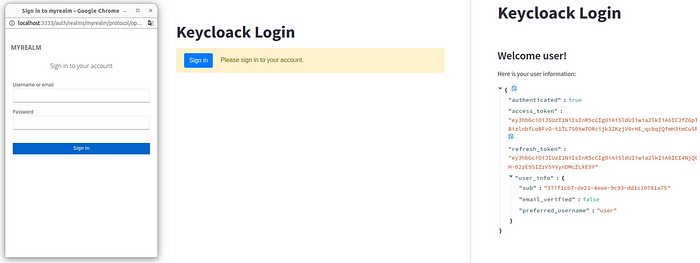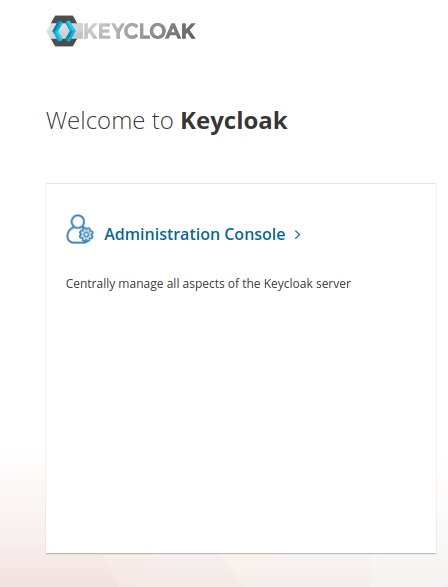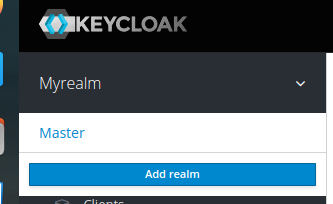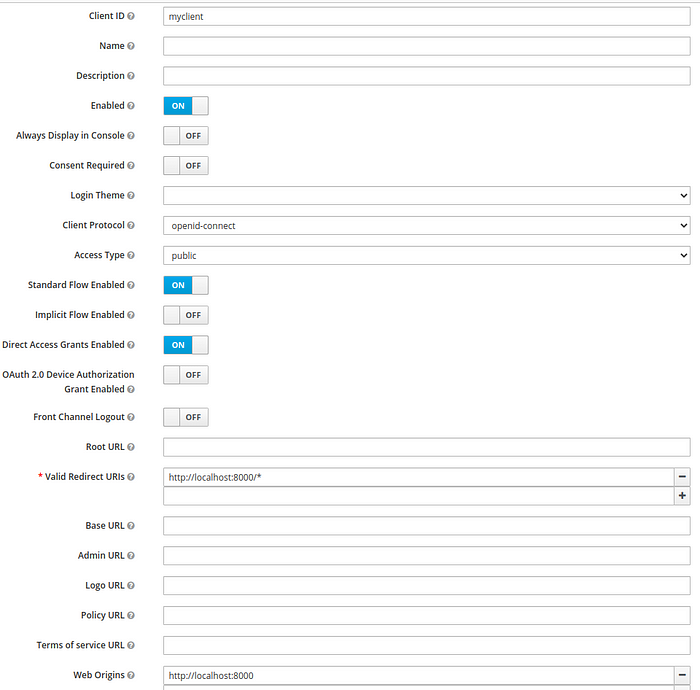Keycloack: Streamlit Login ultra-powered
Powerup login and streamlit integration with KeyCloack Login
Tipically Streamlit have a simple login that can be implemented through streamlit-authenticator and that is very good in standar and standalone cases.
But if you have a more complex (micro-frontend/multi-frontend application) web application in which streamlit is only a component you mast need to centralize login.
That can be easy with Keycloack that get you a microservice that manage a full-featured login with realm, roles and more.
We can implement Keycloack login with streamlit trough streamlit-keycloack library.
In this article we will explore how to create and configure a simple streamlit app that can log with keyclaock with configured docker and docker compose.
The codebase hare available here.

Create the Streamlit APP
Start from requirements.txt that describe the needed libraries
streamlit
streamlit-keycloakWrite the streamlit app at src/main.py
from dataclasses import asdict
import streamlit as st
from streamlit_keycloak import login
st.title('Keycloack Login')
keycloak = login(
url="http://localhost:3333/auth",
realm="myrealm",
client_id="myclient",
init_options={
"checkLoginIframe": False
},
custom_labels={
"labelButton": "Sign in",
"labelLogin": "Please sign in to your account.",
"errorNoPopup": "Unable to open the authentication popup. Allow popups and refresh the page to proceed.",
"errorPopupClosed": "Authentication popup was closed manually.",
"errorFatal": "Unable to connect to Keycloak using the current configuration."
}
)
if keycloak.authenticated:
st.subheader(f"Welcome {keycloak.user_info['preferred_username']}!")
st.write(f"Here is your user information:")
st.write(asdict(keycloak))Setup Docker
Now we can configure our Dockerfile to run the streamlit app:
FROM python:3.10
# for streamlit
ENV LC_ALL=C.UTF-8
ENV LANG=C.UTF-8
RUN mkdir -p /root/.streamlit
RUN bash -c 'echo -e "\
[general]\n\
email = \"\"\n\
" > /root/.streamlit/credentials.toml'
RUN bash -c 'echo -e "\
[server]\n\
enableCORS = false\n\
" > /root/.streamlit/config.toml'
WORKDIR /code
ADD requirements.txt .
RUN pip install --upgrade pip && pip install -r requirements.txt
COPY src ./src
CMD streamlit run src/main.py --server.port 8000 --server.enableCORS=true --server.enableXsrfProtection=falseAnd docker-compose.yml with streamlit and keycloack service:
version: "3.7"
services:
streamlit-app:
build:
context: .
dockerfile: Dockerfile
volumes:
- .:/code
network_mode: "host" # importat to see keycloack with the same name and port of the frontend localhost:3333
postgres:
image: postgres
volumes:
- postgres_data:/var/lib/postgresql/data
environment:
POSTGRES_DB: keycloak
POSTGRES_USER: keycloak
POSTGRES_PASSWORD: password
ports:
- 5432:5432
keycloak:
image: jboss/keycloak
environment:
DB_VENDOR: POSTGRES
DB_ADDR: postgres
DB_DATABSE: keycloak
DB_USER: keycloak
DB_SCHEMA: public
DB_PASSWORD: password
KEYCLOAK_USER: admin
KEYCLOAK_PASSWORD: password
ports:
- 3333:8080
depends_on:
- postgres
volumes:
postgres_data:Now we can run it with docker-compose up or if you have latest version of docker docker compose up .
When the services finish their initialization you will see:
- Streamlit at http://loalhost:8000
- Keycloack at http://localhost:3333
KeyCloack Configurration
Now go to keyclaock and login to admin console with admin, password:

Add a new realm called myrealm and save:

Go to clients and create a new clients that:
- is called myclient
- Valid Redirect URIs: http://localhost:8000/*
- Web Origins: http://localhost:8000

Create a user ander User, add user. Click on the created user and set a new password under Credentials tab, if you do not want to change the password at first login remember to put temporary off.

Now you can open the streamlit page and login with the created user credentials.
Logout
Actually the library do not include a logout, you must go to keyclock link and press sign out at that link: http://localhost:3333/auth/realms/myrealm/account/.
Conclusion
Streamlit are reaching more and more integration and it can be very usefull tool. Thanks to all the people that relase open source libraries that help us to work quickly and better!
And… good contribution to all!
